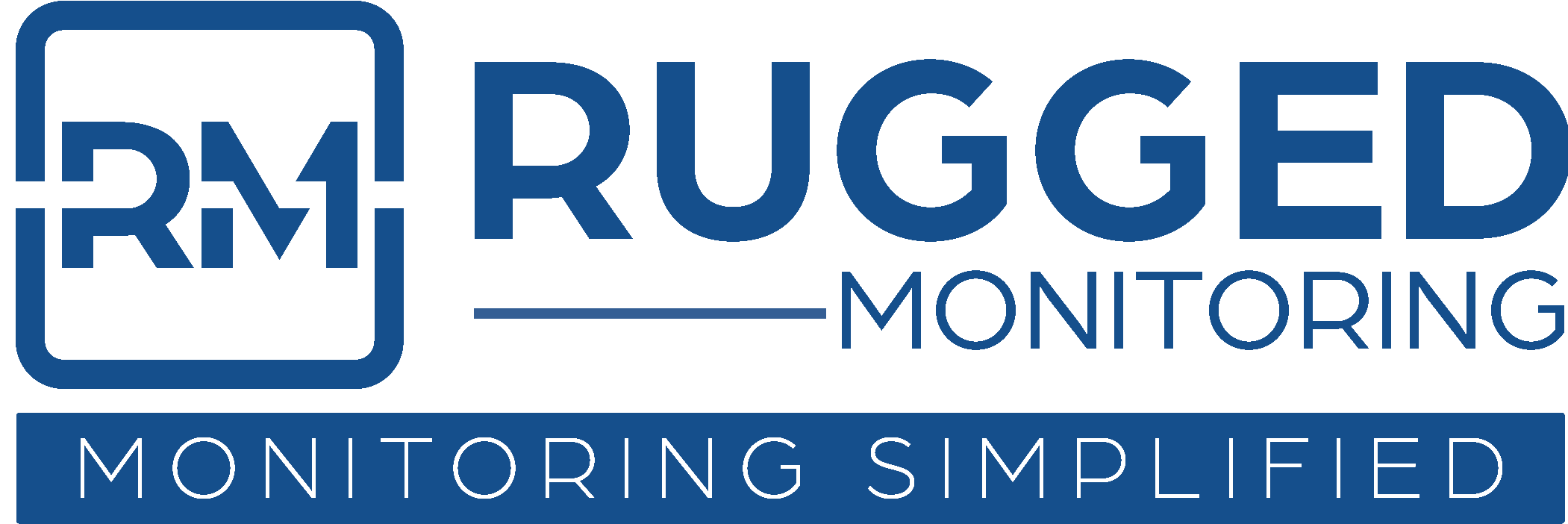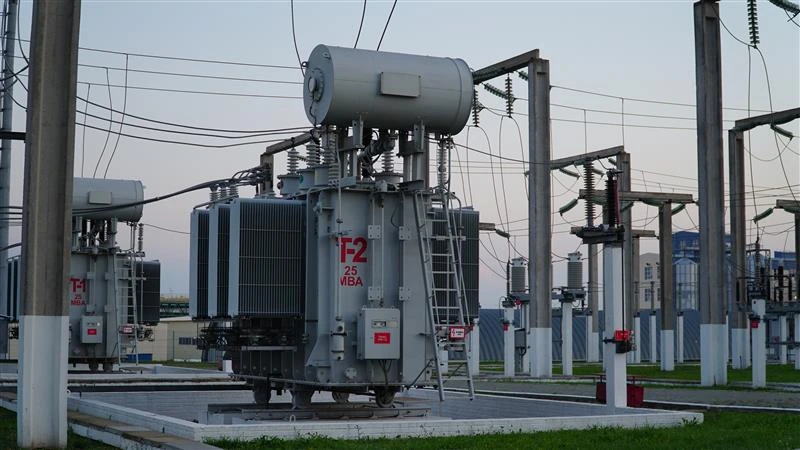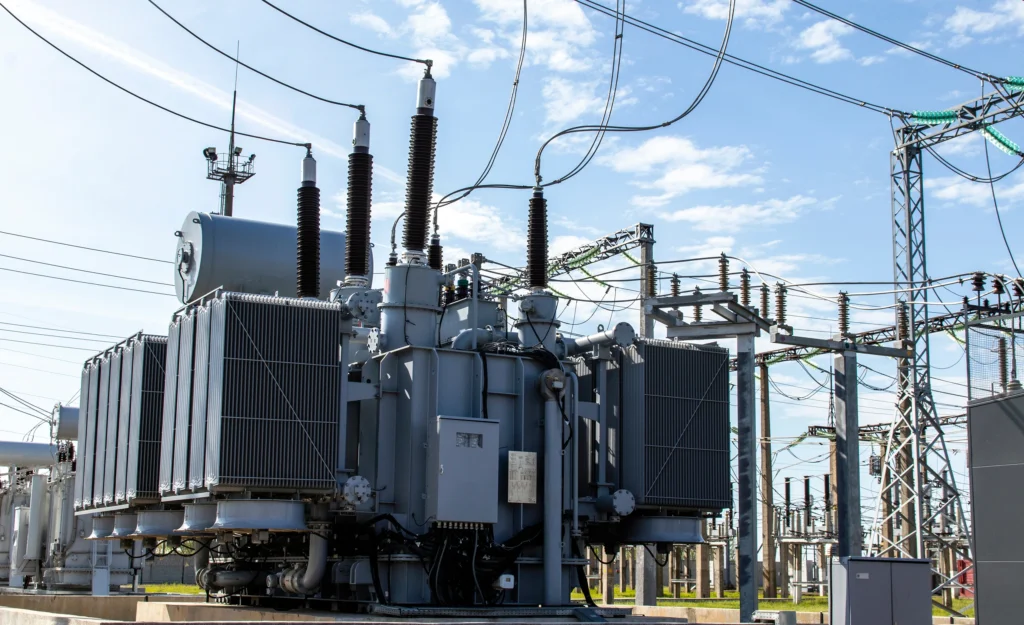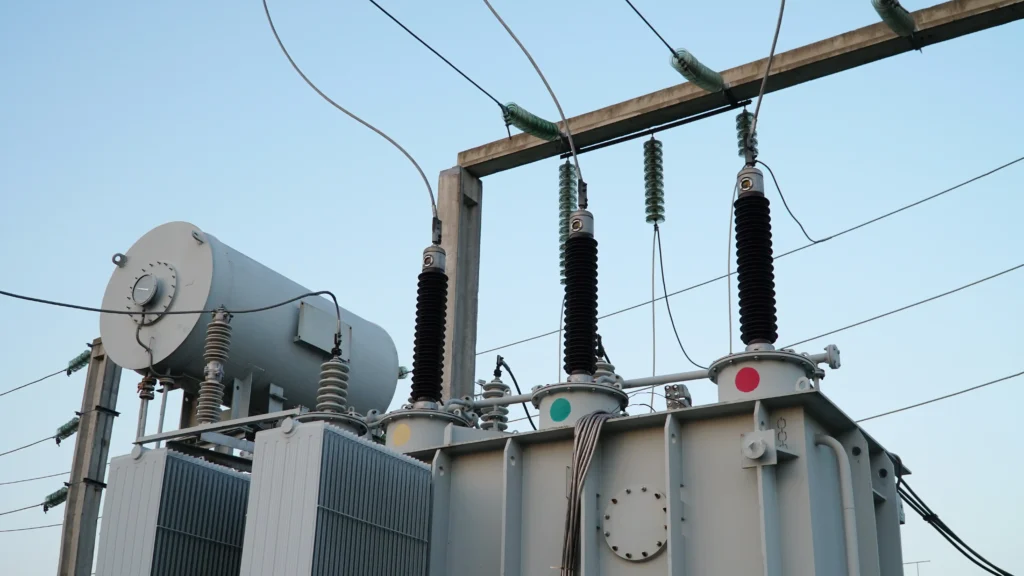Introduction: In an industry that is powered by innovation, streamlining electrical operations has emerged as a focal point of progression. The cornerstone of this evolution is the integration of remote asset monitoring solutions to one central software platform. These software platforms are designed to facilitate the seamless management of multiple electrical assets across diverse geographical locations. As working professionals in the electrical industry are well aware, an optimization of this magnitude is not only desirable but necessary to stay at the forefront of the sector’s fast-paced growth. Let’s delve into how remote asset monitoring can be a game-changer in enhancing operational efficiency and fostering growth in the electrical industry.
Comprehensive Overview of Electrical Assets
Remote asset monitoring software offers a consolidated view of all electrical assets, regardless of their geographical location. This broad perspective allows for an enhanced understanding and quick decision-making process, which is vital in managing multiple sites efficiently.
In the burgeoning landscape of the electrical industry, the necessity for a systematic approach towards overseeing numerous assets has become more prevalent than ever. In this context, the role of remote asset monitoring in facilitating a comprehensive overview of electrical assets cannot be overstated. It stands as a pivotal tool in streamlining electrical operations, acting as the central nervous system that coordinates, controls, and manages the multi-faceted assets spread across various locations.
An encompassing perspective of your assets health, offered by remote asset monitoring, serves as a blueprint, providing a meticulous breakdown of each asset’s current health, status, functionality, and performance metrics. This, in turn, facilitates informed decision-making processes, a vital element in ensuring reliability and operational excellence. Not only does it provide a bird’s eye view of all assets in real-time, but it also helps in identifying areas that require immediate attention, thereby averting potential setbacks.
Moreover, the utility of remote asset monitoring transcends the mere tracking of assets. It integrates seamlessly with various analytical tools, thereby generating insights that are critical in forecasting trends, understanding asset utilization, and facilitating proactive measures that enhance the reliability and longevity of electrical assets. This analytical approach forms the cornerstone in evolving from reactive strategies to a more proactive and informed asset management protocol, which is central to streamlining electrical operations effectively.
Furthermore, this comprehensive approach fosters a cohesive environment where data from disparate systems can be consolidated into a single interface. This data amalgamation promotes an efficient workflow, with teams having the ability to access real-time data, analyze patterns, and derive actionable insights. In this way, remote asset monitoring plays a pivotal role in eliminating information silos, promoting collaboration, and ensuring that all stakeholders are working with a unified vision and purpose.
The electrical industry is increasingly adopting modern technologies, and the essence of achieving operational efficiency lies in how well you can monitor and manage your assets. By facilitating a comprehensive overview of electrical assets, remote asset monitoring stands as an invaluable tool in the modern electrical industry professional’s toolkit. It not only underpins the efforts in optimizing the performance of individual assets but also acts as a conduit in achieving broader organizational objectives centred around efficiency, sustainability, and growth.
By revolutionizing the way professionals approach asset management, remote asset monitoring is setting a new standard in the industry, promising a future where electrical operations are not only streamlined but are also more resilient, adaptable, and capable of meeting the dynamic demands of a rapidly evolving sector.
Real-Time Monitoring and Alert System
Implementing a real-time monitoring and alert system can help in preventing potential problems before they escalate. It enables timely interventions, minimizing downtime and ensuring a smoother flow in electrical operations.
In an industry where swift reactions to fluctuations and anomalies can spell the difference between a minor hiccup and a significant operational setback, the incorporation of a real-time monitoring and alert system via remote asset monitoring is more than a luxury — it is an imperative. It stands as a beacon of innovation in streamlining electrical operations, heralding a new era where responsiveness meets efficiency.
At the core of this transformation lies the ability of remote asset monitoring to continuously oversee the performance and condition of various electrical assets from a centralized vantage point. The professionals in the electrical industry can thereby avail themselves of instantaneous data, which is critical in making informed decisions, reducing downtimes, and maintaining the optimal functioning of assets.
An essential feature of real-time monitoring is the alert system, a proactive mechanism that notifies personnel of potential issues before they escalate into severe problems. This pre-emptive approach allows for immediate interventions, thereby mitigating risks and avoiding costly downtimes. The integration of sophisticated alert systems within remote asset monitoring platforms ensures that critical information is relayed promptly, facilitating quick response times and thereby significantly reducing the repercussions of any unforeseen events.
Moreover, the real-time monitoring and alert system serves as a catalyst in fostering a culture of preventative maintenance, a shift from traditional reactive models. This transformation is pivotal in streamlining electrical operations, as it promotes the longevity of assets by addressing issues at their nascent stages, preventing further complications and ensuring smoother workflow processes.
Additionally, by leveraging the capabilities of remote asset monitoring, organizations can tailor their alert parameters to suit their specific operational needs, thus providing a more nuanced and effective monitoring strategy. This customization aspect not only facilitates a more focused monitoring approach but also ensures that alerts generated are both relevant and actionable.
As the electrical industry gravitates towards a more data-driven approach, the role of a real-time monitoring and alert system cannot be overstated. It serves as a nexus where technology meets operational excellence, fostering an environment where asset management is both streamlined and optimized. Through the integration of such systems, professionals in the industry are equipped with the tools necessary to navigate the complexities of modern electrical operations, setting a benchmark for efficiency, reliability, and innovation in a sector that remains perennially poised for growth and expansion.
Predictive Maintenance and Asset Longevity
Through data analytics and predictive algorithms, remote asset monitoring can significantly prolong the life span of electrical assets by facilitating preventative maintenance schedules. This not only saves on replacement costs but also aids in planning and budgeting efforts.
In an era where the electrical industry is driven by rapid technological advancements, predictive maintenance emerges as a revolutionary concept that holds immense promise. Central to this progressive shift is remote asset monitoring, a potent tool that promises to redefine the paradigms of streamlining electrical operations.
Predictive maintenance, at its core, is the art and science of using data-driven insights to foresee potential asset malfunctions, wear, or inefficiencies before they manifest. This foresight is vastly different from traditional reactive or scheduled maintenance methods, which often wait for a problem to either occur or follow a time-based approach. Instead, predictive maintenance, underpinned by remote asset monitoring, facilitates proactive interventions, ensuring assets are serviced or replaced right before potential failure but well after they’ve delivered their optimal performance.
Remote asset monitoring systems, integrated with advanced analytics, continuously capture and analyze vast amounts of data from various electrical assets. From temperature fluctuations to irregular vibrations or performance drops, these systems can identify minute deviations from standard operating conditions. Over time, through machine learning and AI algorithms, they develop a deep understanding of each asset’s operational behavior, predicting when an asset is likely to fail or requires maintenance.
The tangible benefits of this predictive approach to asset maintenance are manifold:
Improve Reliability:
Cost Efficiency: By pinpointing when maintenance is genuinely required, organizations can optimize their operational costs, ensuring they don’t overspend on unnecessary preventive measures or face the high costs of sudden, reactive repairs.
Operational Uptime: Predictive maintenance drastically reduces unexpected downtimes. When maintenance activities are accurately forecasted, they can be scheduled during non-peak hours, ensuring minimal disruption.
Enhanced Asset Life: Regularly maintaining assets just before they face potential issues ensures they operate optimally for a more extended period, thereby prolonging their lifecycle.
Safety: Predicting and preempting failures can significantly reduce the risks associated with sudden asset malfunctions, safeguarding both the equipment and the personnel involved.
The role of remote asset monitoring in this predictive paradigm is foundational. By continuously providing a real-time data stream and offering analytical insights, it ensures that the electrical industry moves from a position of uncertainty and reactivity to one of foresight and proactivity.
In summary, as the electrical industry seeks pathways to refine and enhance its operational efficiency, predictive maintenance, powered by remote asset monitoring, stands out as an essential strategy. It paves the way for an environment where assets are not only managed more efficiently but are also optimized for longevity and consistent performance, ensuring a streamlined and sustainable operational framework.
Energy Efficiency and Sustainability
Streamlining electrical operations with remote asset monitoring encourages energy efficiency and sustainability. By providing insights into energy usage patterns, it helps in identifying opportunities for reducing energy consumption, thereby contributing to a greener environment.
In recent years, the quest for energy efficiency and sustainability has transcended from being mere buzzwords to becoming central themes steering the direction of the electrical industry. Remote asset monitoring serves as a pivotal tool in this transition, significantly contributing to the streamlining of electrical operations and fostering an environment that is aligned with the principles of green and sustainable energy management.
Firstly, remote asset monitoring assists in meticulously tracking the energy consumption patterns of various electrical assets across different sites. This granular insight into energy usage patterns allows professionals to identify and rectify inefficiencies, thereby optimizing energy consumption. For instance, by detecting assets that are consuming power disproportionately, necessary adjustments can be made to ensure optimal performance and minimal energy wastage.
Further, remote asset monitoring allows for the integration of renewable energy sources into the existing infrastructure seamlessly and with lesser stress on existing assets. It aids in monitoring the performance and output of renewable energy assets, such as solar panels and wind turbines, thereby fostering a synergistic environment where renewable and non-renewable energy sources can coexist and complement each other effectively.
Furthermore, by fostering a culture of predictive maintenance, it aids in enhancing the lifespan of assets, thereby reducing the overall carbon footprint associated with the manufacturing, transportation, and disposal of electrical components. It ensures that assets reach their maximum potential lifespan, contributing to a more circular economy where waste is minimized, and resource efficiency is maximized.
In the broader spectrum, remote asset monitoring stands as a cornerstone in the electrical industry’s transition towards a more sustainable future. It plays a pivotal role in fostering energy efficiency, promoting the integration of renewable energy sources, and encouraging sustainable asset management practices. By aligning the operational strategies with the principles of sustainability, it promises a pathway where economic viability coexists with environmental responsibility, marking a significant stride towards a greener and more sustainable future in the electrical industry.
Enhancing Compliance and Reporting
Compliance with regulatory requirements is a significant aspect in the electrical industry. Remote asset monitoring solutions aid in effortless tracking and reporting of compliance data, thus mitigating risks and fostering a culture of transparency and adherence to industry standards.
In a sector as dynamic and critically regulated as the electrical industry, adherence to compliance standards and accurate reporting are not merely administrative formalities but essential components that guarantee safety, reliability, and sustainability. Remote asset monitoring significantly contributes to streamlining electrical operations by simplifying compliance procedures and enhancing the accuracy and efficiency of reporting processes.
An integral aspect of compliance in the electrical industry is the meticulous monitoring of various parameters that dictate the health and performance of electrical assets. For example Periodic breaker testing data, compliance to the fire code for battery banks, Sf6 emission reporting from SF6 filled assets etc. Remote asset monitoring facilitates this by continuously tracking these parameters, thereby ensuring that the assets operate within the stipulated guidelines and standards. This continuous monitoring helps in averting potential violations and the consequent penalties, thereby fostering a culture of compliance within the organization.
Furthermore, remote asset monitoring enables the automated collection and consolidation of data from multiple assets across different sites. This automation not only minimizes the possibility of human error but also significantly reduces the time and resources required for data collection and reporting. By offering a centralized platform where all relevant data can be accessed and analyzed, it streamlines the reporting processes, making it easier to generate comprehensive reports that adhere to the regulatory requirements.
Moreover, remote asset monitoring systems are often equipped with features that facilitate the generation of customized reports. These customizable reports allow organizations to tailor their reporting according to the specific needs and demands of various stakeholders, including regulatory bodies, clients, and internal teams. By offering insights that are both deep and broad, these systems ensure that the reporting is not just compliant but also serves as a valuable tool for informed decision-making.
In addition to regulatory compliance, remote asset monitoring also plays a vital role in environmental compliance. By facilitating check on green house gas emission (SF6 from Gas Insulated Switchgears), energy efficiency and sustainable asset management, it aids organizations in meeting their environmental targets and commitments. This alignment with environmental goals is not only beneficial from a compliance perspective but also positions the organization as a responsible and sustainable entity in the broader industry landscape.
In a nutshell, remote asset monitoring emerges as a potent tool in enhancing compliance and reporting in the electrical industry. By offering features that simplify compliance procedures and enhance reporting efficiency, it stands as an invaluable ally for professionals in the industry. Through the integration of such systems, organizations can not only ensure adherence to regulatory standards but also foster a culture of transparency, accountability, and excellence, which are pivotal in steering the industry towards a future that is both sustainable and responsible.
Conclusion
In conclusion, the adoption of remote asset monitoring is an indispensable strategy for professionals in the electrical industry looking to streamline operations and enhance efficiency. It offers a myriad of benefits ranging from real-time monitoring to energy efficiency, all of which contribute to a more sustainable and prosperous future for the industry. By incorporating remote asset monitoring solutions, businesses can not only stay a step ahead in compliance and reporting but also leverage the power of data analytics for predictive maintenance and asset longevity. As we navigate the evolving landscape of the electrical industry, embracing these technological advancements will be pivotal in steering the sector towards a future characterized by innovation, efficiency, and sustainability.




